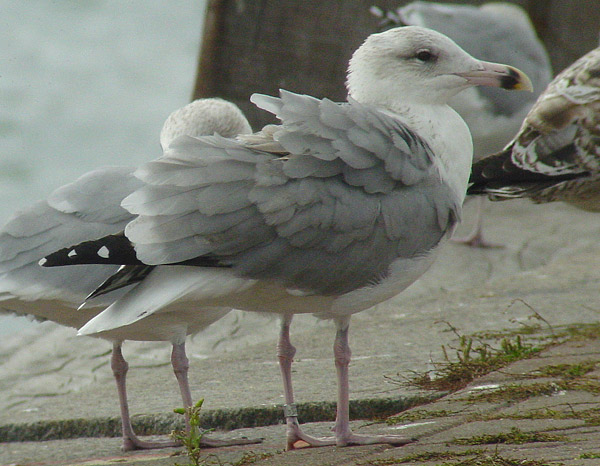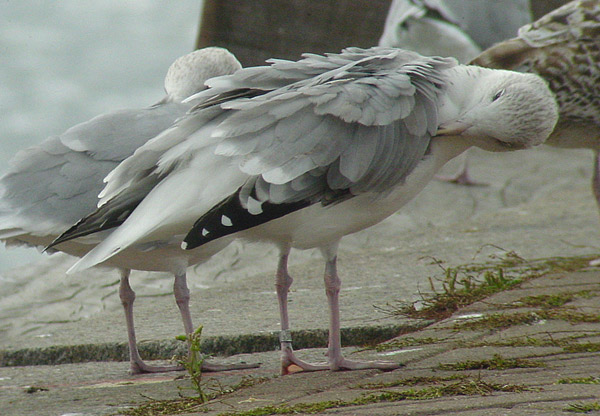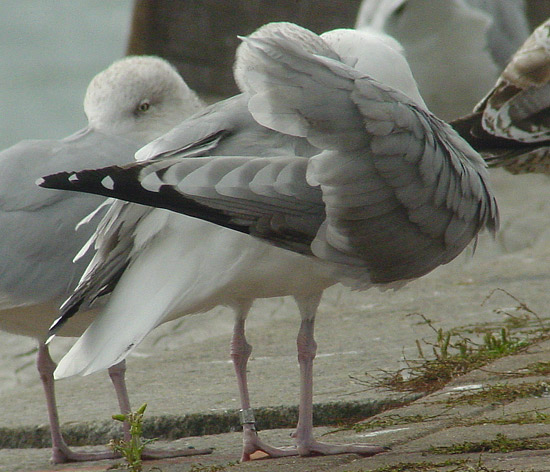 Herring Gull (argentatus & argenteus)
Herring Gull (argentatus & argenteus)
(last update:
Herring Gull plumages:
hg 1cy July
hg 1cy August
hg 1cy September
hg 1cy October
hg 1cy November
hg 1cy December
hg 2cy January
hg 2cy February
hg 2cy March
hg 2cy April
hg 2cy May
hg 2cy June
hg 2cy July
hg 2cy August
hg 2cy September
hg 2cy October
hg 2cy November
hg 2cy December
hg 3cy January
hg 3cy February
hg 3cy March
hg 3cy April
hg 3cy May
hg 3cy June
hg 3cy July
hg 3cy August
hg 3cy September
hg 3cy October
hg 3cy November
hg 3cy December
hg sub-ad January
hg sub-ad February
hg sub-ad March
hg sub-ad April
hg sub-ad May
hg sub-ad June
hg sub-ad July
hg sub-ad August
hg sub-ad September
hg sub-ad October
hg sub-ad November
hg sub-ad December
hg ad January
hg ad February
hg ad March
hg ad April
hg ad May
hg ad June
hg ad July
hg ad August
hg ad September
hg ad October
hg ad November
hg ad December
Herring Gull argenteus NLA 5.366.997 4CY, September 21 2004, Scheveningen, the Netherlands.
It was ringed on October 07 2002 at IJmuiden (52.28N 04.35E) as 2cy; released after being held in captivity for more than 24 hours. Upper-part grey tone in combination with iris colour, facial expression and size advocate sub-species argentatus, but could be bulky male 4CY argenteus. This bird resembles an adult in many respect, but the black markings on the bill are too extensive for full adult birds. Note also the dark marking in R6 (outer tail-feather), the brown diffuse markings on the central greater coverts, pink-based bill and dark orbital ring. The primary moult score: P8 fully grown. Bottom image shows greater primary coverts and pattern on P5.

From June (often mid-May in France, Belgium and the Netherlands) to October, a complete moult will bring birds in so-called "sub-adult winter" plumage. A new set of primaries will grow during the summer months and by October, the old primaries are all shed in argenteus in the Netherlands and northern France. In most adults (!), the new primary P6 is just visible beneath the tertials and shows a clear sub-terminal band. By late-September, P6 and P7 are fully-grown as well. At the same time, almost all wing-coverts have been renewed. In summer, the head is still largely white, but by September, most birds develop extensive 'winter streaking', in sub-adults strongly mottled brown contrasting with the white breast as in an executioner's hood. The tertials show obvious white tips. The iris is white-yellow with extensive speckling. The bill has a red gonydeal spot confined to the lower mandible. The orbital ring is yellow-orange in most argenteus, but often dark in autumn.

September primary moult scores in sub-adult & adult Herring Gulls at Scheveningen. |
||||||||||
| . | 30.08.2000 | 01.09.2000 | 01.09.2000 | 05.09.2001 | 07.09.2000 | 18.09.2000 | 21.09.2000 | 21.09.2001 | 26.09.2001 | 30.09.2000 |
| 0 | . | . | . | . | . | . | . | . | . | . |
| 1 | . | 1 | . | 3 | 3 | . | . | . | . | . |
| 2 | 4 | 4 | 9 | 19 | 15 | . | . | . | . | . |
| 3 | 7 | 5 | 41 | 32 | 30 | . | . | . | . | . |
| 4 | . | . | 10 | 4 | . | 7 | . | . | . | . |
| 5 | . | . | 1 | . | . | 35 | 42 | 7 | 24 | 2 |
| 6 | . | . | . | . | . | 36 | 60 | 24 | 62 | 38 |
| 7 | . | . | . | . | . | 11 | 20 | 9 | 12 | 43 |
| 8 | . | . | . | . | . | 2 | 3 | . | . | 1 |
| n: | 11 | 10 | 61 | 58 | 48 | 91 | 125 | 40 | 98 | 84 |
| average | 2,64 | 2,40 | 3,05 | 2,64 | 2,56 | 5,63 | 5,87 | 6,05 | 5,88 | 6,51 |
| Variance (s2) | 0,25 | 0,49 | 0,38 | 0,48 | 0,38 | 0,77 | 0,58 | 0,41 | 0,36 | 0,33 |
| SD (s) | 0,50 | 0,70 | 0,62 | 0,69 | 0,62 | 0,88 | 0,76 | 0,64 | 0,60 | 0,57 |
| SE (sx) | 0,15 | 0,22 | 0,08 | 0,09 | 0,09 | 0,09 | 0,07 | 0,10 | 0,06 | 0,06 |
| Notes: 30.08 - 07.09: number of remaining old primaries sub-ad and adults (thus 1 = P10 still old). 18.09 - 30.09: number of new primaries in adults (hence 6 = P6 full grown). *) By September, local argenteus get company from argentatus from Norway, which have on average lower moult scores and from argentatus from the Baltic region, which have equal moult scores probably. |
||||||||||
